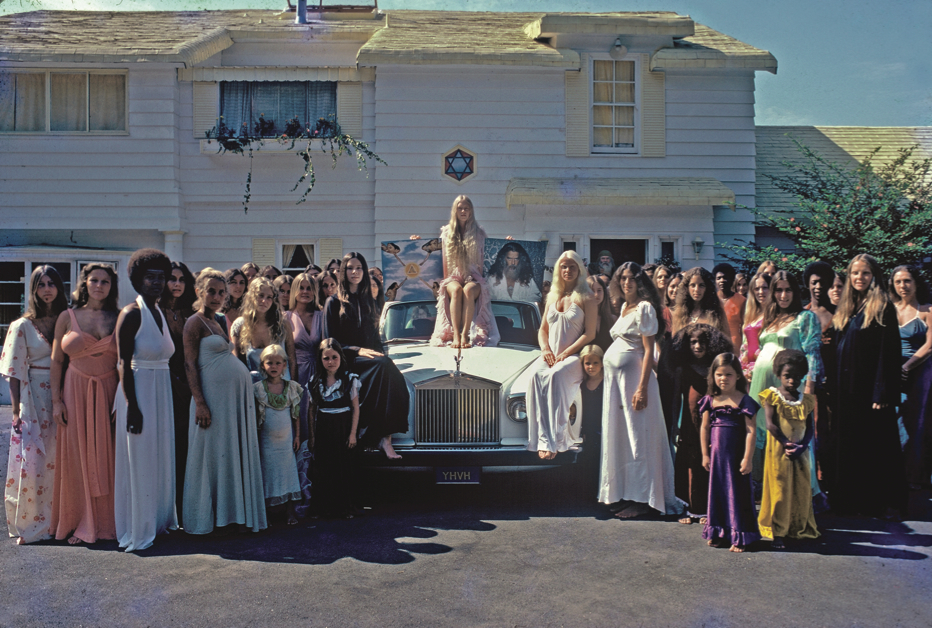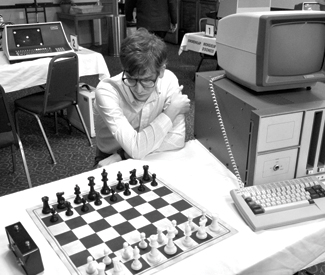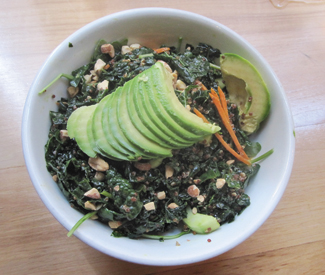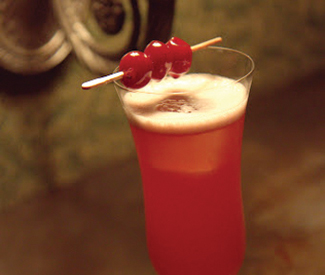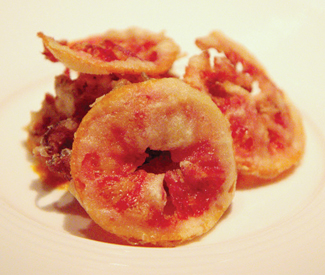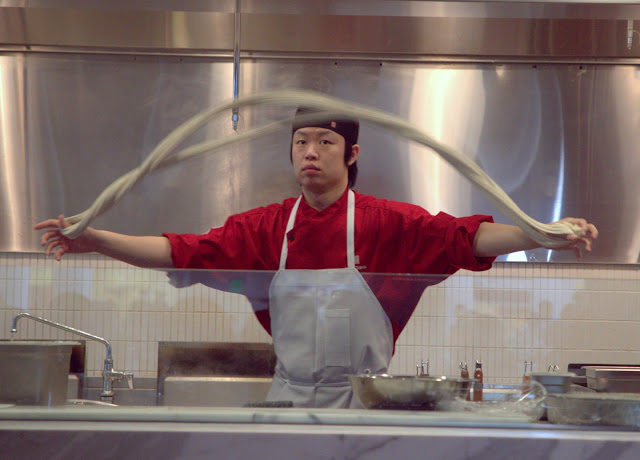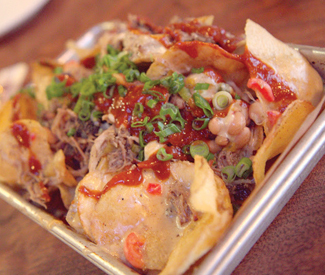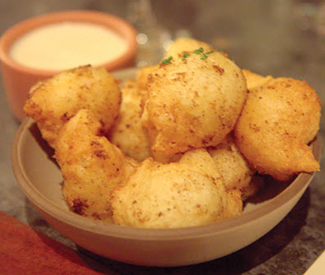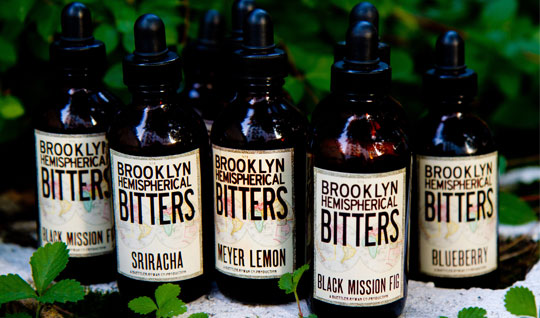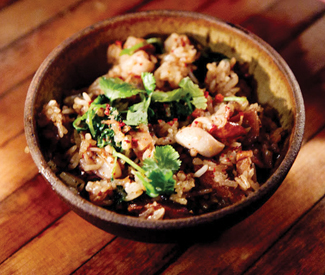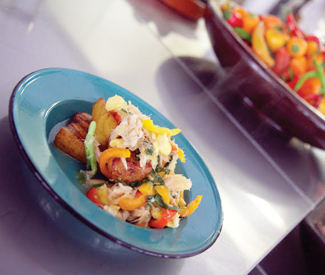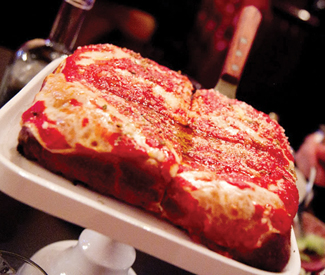virginia@bayguardian.com
Choosing 50 best bars in this city of ours is no easy feat. Historically one of the groundbreaking drinking towns, in the 1800s we nurtured wild Barbary Coast saloons and Professor Jerry Thomas (the first and ultimate bartender to elevate and publicize the craft), and were the first to import and bring pisco to fame. American wine, craft beer (Anchor Steam), and craft spirits first entered public consciousness in our region. Breathtaking views, a legacy of boundary-pushing entrepreneurs, avant-garde cultures, and a pioneering food movement decades old — how could we not be a drinking town? Whether you long to hit the town old school like Nick & Nora, play tunes on the jukebox with rounds of beers, taste the latest in cocktail experimentation, compare wine flights, or linger over conversation with friends… SF has something to suit every mood. Out of hundreds, these 50 have set standards, become beloved favorites, shaped city culture, or just serve a damn good drink.
PS For this list we concentrated specifically on bars (including those at restaurants and hotels), leaving you to judge the cocktails at music venues and dance clubs on their own merits.
>>SEE THIS LIST ON ONE PAGE
PRICE RANGE KEY:
$ (cocktails generally under $10)
$$ (cocktails generally $10-14)
$$$ (cocktails generally $15 and above)
NOTABLE KEY:
Cocktail Destination: Noteworthy cocktails
Spirits Selection: Extensive or well-curated spirits selection
Memorable Atmosphere: Worth drinking here for the atmosphere
Wine Sanctuary: Exceptional wine list
Beer Haven: Exceptional beer list
Gourmet Bites: Notable food
Dive: Classic, standout dive bar
Classic: An SF staple, standard-setter
Mellow: Particularly laid back, good for conversation
Music: Live music destination
15 ROMOLO
North Beach, $–$$
Cocktail Destination, Gourmet Bites, Spirits Selection
Consistently one of SF’s best cocktail bars, 15 Romolo commands an uphill alley in North Beach with some of the most balanced and inventive drinks in town. The laidback, dim space (with fab jukebox), reflects pre-Prohibition spirit but isn’t obnoxiously theme-y. Many of our city’s top bartenders started here, going on to launch other bars. Romolo’s brunch — boozy waffle shots! — and food menu rank among the most satisfying bar food in existence. Hello, peanut butter bacon burgers!
15 Romolo, SF. (415) 398-1359, www.15romolo.com
ALEMBIC
Upper Haight, $–$$
Cocktail Destination, Gourmet Bites, Spirits Selection
As Alembic currently faces significant changes (bar manager Daniel Hyatt’s exit after nearly seven years, expansion into the Red Vic space next door), time will tell if it remains the iconic bar it has been for the past 7 years. Still serving impeccable New Orleans classic cocktails, Hyatt’s unique, forward-thinking cocktails, and underrated, gourmet food, Alembic’s spirits collection, particularly American whiskey, has been one of its key strengths since day one.
1725 Haight, SF. (415) 666-0822, www.alembicbar.com
AQ
SoMa, $$
Cocktail Destination, Gourmet Bites, Spirits Selection, Memorable Atmosphere, Wine Sanctuary
AQ’s lovely brick-walled, high ceiling restaurant evolves its decor with the season, while the bar changes vintage glassware and bar top: burnt copper for fall, marble in winter. Seasonal cocktail classics are infused with subtle twists while original cocktails are incredibly creative, unusual. The wine list is extensive, heavy on the Loire Valley but offering an international range.
1085 Mission, SF. (415) 341-9000, www.aq-sf.com
AUB ZAM ZAM
Upper Haight, $
Classic, Dive
Faded 1930s Arabian Nights theme and legendarily grumpy bartenders have set this boozy cocktail den apart for decades. This piece of cocktail history birthed countless stories of now deceased Bruno, who would kick people out for ordering a vodka martini — or for any reason that suited him. It’s friendlier now, thank goodness. And there’s been no upgrades to decor, the jukebox still belts out Tony Bennett and Tom Waits, drinks remain stiff, and there’s almost always a seat waiting for you. It’s nice knowing just a few places remain averse to change.
1633 Haight, SF. (415) 861-2545
AUNT CHARLIE’S LOUNGE
Tenderloin, $
Classic, Dive, Memorable Atmosphere
Everything you thought about gay bars was wrong — or else exactly right. This wonderfully worn-in, carpeted little cave in the Tenderloin is bursting with character and crazy seasonal decor. Grittily glamorous Hotboxxx Girls drag shows on Friday and Saturday evenings are a must for the too-hip and the just-visiting alike.
133 Turk, SF. (415) 441-2922, www.auntcharlieslounge.com
BAR AGRICOLE
SoMa, $$
Cocktail Destination, Gourmet Bites, Memorable Atmosphere
Good luck getting a bar seat in this ultra-cool, eco-chic bar-restaurant, minimalist yet dramatic under shimmering light installations, serving forward-thinking food. Reserve a table in the front garden, arrive early, or just wait your turn at the bar and you’ll be blessed with impeccable rum and rhum agricole cocktails alongside a range of pristinely-executed classics from Thad Vogler and crew.
355 11th St., SF. (415) 355-9400, www.baragricole.com
BENDER’S
Mission, $
Beer Haven, Dive
A stalwart favorite of fixie riders, rock mavens, and those weary of fighting for space a Zeitgeist — or hey, folks just looking for a good, stiff drink in a mercifully concept-free atmosphere with room to sit down. Bender’s stands out with a tasty beer selection and tater tots and tacos to die for.
806 Van Ness, SF. (415) 824-1800, www.bendersbar.com
BIG
TenderNob, $$$
Cocktail Destination, Memorable Atmosphere
Truly tiny under red velvet-draped ceiling, the ironically named Big fills up quickly, but overcrowding is somehow kept at bay, making it, at times, an intimate spot for a cocktail. Though pricey, the menu-less bar is about seeing what house syrups have been made that day (mirepoix, corn?), what spirit you might be in the mood for, and what two talented bartenders can craft on the spot.
761 Post, SF.
THE BIG 4
Nob Hill, $$$
Classic, Gourmet Bites, Memorable Atmosphere, Mellow, Musical
May rumors of the Huntington Hotel’s new owners doing away with this fantastic, historic bar — the jewel of Nob Hill — be untrue. For decades, the Big 4, named for the Central Pacific Railroad’s “big fiour” tycoons, has been the archetypal old school bar in a restaurant. Its dark wood setting and fireplace evoking an ur-capitalist gentleman’s club and martini lounge set to the nightly, live piano strains of Michael Parsons (Sundays it’s Steve Klawiter).
1075 California, SF. (415) 771-1140, www.big4restaurant.com
BIX
Financial District, $$
Classic, Cocktail Destination, Musical
One of the more dazzling dining rooms in town. You enter thick curtains off a downtown alley into Bix’s dramatic space — like walking into a Thin Man movie. Live jazz and beautiful Negronis confirm you’ve entered another, jazzier era, one Bix has faithfully preserved since 1988. Here’s to many more decades.
56 Gold, SF. (415) 433-6300, www.bixrestaurant.com
BLACKBIRD
Castro, $–$$
Cocktail Destination
The Castro is one of the most social neighborhoods in SF, rife with numerous watering holes and gathering places. But not until Blackbird was there a cocktailian’s haven, serving elegant drinks — with a well-curated wine ist to match — utilizing house made pistachio orgeat, hibiscus-infused brandy, and other handcrafter ingredients.
2124 Market, SF. (415) 503-0630, www.blackbirdbar.com
BOURBON AND BRANCH
Tenderloin, $$
Cocktail Destination, Memorable Atmosphere, Mellow, Spirits Selection,
Love or hate the new speakeasy bars, Bourbon and Branch, now eight years old, was one of the earliest progenitors of the theme outside of NYC. And despite owner Future Bars’ notable other bars (Tradition, Local Edition), B&B remains the best. Rarely is a bar this transporting: ring a doorbell next to an unmarked door and enter the 1920s. This reservations-only hideaway guarantees a seat, a romantic escape for conversation and quality drink. Its bar-within-a-bar, Wilson and Wilson, is likewise one of SF’s best, digging even deeper into housemade ingredients and unusual combinations. Consider it the impressive place to take out-of-towners for a drink.
501 Jones, SF. (415) 346-1735, www.bourbonandbranch.com
BROKEN RECORD
Excelsior, $
Spirits Selection, Dive, Gourmet Bites
This dive in the outer reaches of SF draws whiskey fans from afar. With every chef who sets up shop in Broken Record’s back room, kick-ass bar food (Southern BBQ, elevated burgers) results. From pool table to patio, it’s everything you want in a dive bar and more, including laid back bartenders, a genuine vibe, and more than 250 whiskies at reasonable prices.
1166 Geneva, SF. (415) 963-1713, www.facebook.com/brokenrecordsf
CANTINA
Union Square, $–$$
Cocktail Destination
Pioneering South and Central American cocktails, Cantina has been keeping it real for years with refreshing drinks highlighting tequila, mezcal, cachaca, and pisco (owner Duggan McDonnell is also one of the creators of Campo Encanto Pisco). Cantina’s basement hosts all kinds of events, a community gathering place.
580 Sutter, SF. (415) 398-0193, www.cantinasf.com
CHURCH KEY
North Beach, $–$$
Beer Haven, Mellow
Church Key is a breath of fresh air amid the party bars, classic dives, strip clubs, and cocktail spots of North Beach. With cozy upstairs mezzanine, it’s a beer lovers dream of revolving drafts and bottles in an unpretentious setting where one can actually talk with friends.
1402 Grant, SF. (415) 963-1713
CLUB DELUXE
Upper Haight, $
Music, Gourmet Bites
Blonde wood walls, black and white tile, red booths, dim lighting — an environment virtually unchanged for decades. These are reasons to love Club Deluxe but supreme is multiple nightly sets of some of the best live jazz in SF, from bossa nova to bepop and blues. You don’t come here for the drinks but recent addition of Chef Thomas Martinez offers fantastic food. One can comfortably linger over a shot of whiskey, jazz, and gourmet plates.
1511 Haight, SF. (415) 552-6949, www.sfclubdeluxe.com
COMSTOCK SALOON
North Beach, $–$$
Cocktail Destination, Gourmet Bites, Memorable Atmosphere, Spirits Selection
Showcasing SF’s Barbary Coast era with vintage ceiling fans, Victorian couch sidling up to a pot belly stove, and the original trough (ahem, to piss in back in the day) lining a dramatic wood bar, “Saloon Keepers” Jeff Hollinger and Jonny Raglin honor the history of Comstock’s gorgeous, two-room, 1907 space. It’s a memorable a date night and a casual, neighborhood hangout. Whether cozy in a bar booth or at a table in the wainscoted dining room, food from Chef Carlos Espina is as thoughtful as the classic cocktails.
155 Columbus, SF. (415) 617-0071, www.comstocksaloon.com
DOSA
Mission, Fillmore, $–$$
Cocktail Destination, Gourmet Bites, Memorable Atmosphere
Besides serving some of the best upscale South Indian food anywhere, Dosa’s two locations also craft a unique cocktail menu unlike any, heavy on Indian spices and flavor profiles, including its own house gin produced by local distiller Old World Spirits: cardamom-rich Blade Gin.
Dosa on Fillmore: 1700 Fillmore, SF. (415) 441-3672
Dosa on Valencia: 995 Valencia, SF. (415) 642-3672, www.dosasf.com
EDINBURGH CASTLE
Tenderloin, $
Classic, Dive
This quintessential SF dive bar has been around for years, akin to classic British pubs, occasionally rowdy, generally low key, ever-ready with a pint. In that spirit, its serves fish and chips in newspaper and facilitates offbeat community with readings, ’60s dance club nights, and legendary trivia quizzes.
950 Geary, SF. (415) 885-4074, www.castlenews.com
ELIXIR
Mission, $–$$
Cocktail Destination
When partying or sports-loving crowds descend, the already small bar gets cramped, in a space dating back to 1858. Boasting an impressive whiskey collection, Elixir is run by cocktail pioneer H. Joseph Ehrmann, and talented bar managing duo Shea Shawnson and Nick DesEnfants. The cocktail menu is a mix of 1800s saloon classics, Elixir favorites like H.’s Celery Cup No. 1, and rotating seasonal drinks.
3200 16th St., SF. (415) 552-1633, www.elixirsf.com
FAT ANGEL
Fillmore, $–$$
Beer Haven, Wine Sanctuary, Gourmet Bites
Part romantic European café, part comfortable neighborhood pub, Fat Angel manages to be dream neighborhood beer and wine bar in one. Above average bar bites, friendly staff, and changing draft beers and wines listed on a large chalkboard under dramatic chandelier ensure you’ll want to linger for hours.
1740 O’Farrell, SF. (415) 525-3013 www.fatangelsf.com
GITANE
Financial District, $$
Cocktail Destination, Gourmet Bites, Memorable Atmosphere
Just about the sexiest bar and setting in the city, Gitane has been strong on spirits collection, wine list, and cocktails from day one, with upscale regional Spanish cuisine making it a real date night. 6 Claude Lane, SF. (415) 788-6686, www.gitanerestaurant.com
HEAVEN’S DOG
SoMa, $–$$
Cocktail Destination, Gourmet Bites, Spirits Selection
Undergoing a significant overhaul, Heaven’s Dog showcases the cocktail expertise of one of our great barmen, Erik Adkins. The bar at Asian-influenced Heaven’s Dog restaurant has been tended by some of SF’s top bartenders, most recently supervised by Ethan Terry (of AQ, 15 Romolo, Comstock). One of the best places for classic Charles H. Baker cocktails anywhere, its latest incarnation will focus on original creations alongside Charles Phan’s cuisine (of Slanted Door fame).
1148 Mission, SF. (415) 863-6008, www.heavensdog.com
THE HIDEOUT
Mission, $
Cocktail Destination
Through longtime Mission favorite Dalva is a hidden back room, The Hideout, a getaway for cocktail geeks who disdain pretension. With guest bartending appearances by local and visiting drink masters, bar staff display an adept hand at elegant but never fussy cocktails, shaken or stirred to loud, classic tunes of the ’70s and ’80s.
3121 16th St., SF. (415) 252-7740
HI TOPS
Castro, $–$$
Memorable Atmosphere, Gourmet Bites
It’s a new gay sports bar — a recent shot in Sports Illustrated featuring two men in 49ers jerseys kissing toppled barriers. But why stop there? The vintage ’60s gym decor, eclectic atmosphere, and twists on game night bites have upped the sports bar game. And yes, there’s a cocktail with Muscle Milk as base.
2247 Market, SF. (415) 551-2500, www.hitopssf.com
HOG & ROCKS
Mission, $$
Cocktail Destination, Gourmet Bites
Hog & Rocks has been a popular watering hole for American whiskey and unfussy cocktails lovers, happy over platters of oysters and ham. Once the bar was commandeered by Michael Lazar consulting with Scott Beattie, it became a special place for bracing cask strength Old Fashioneds, or tall rocks refreshers accented by garden fresh and preserved fruits and herbs. Lazar and Beattie (who also put together the drink menu at the new Hi Lo across the street) have made it a casual yet festive cocktail destination.
3431 19th St., SF. (415) 550-8627, www.hogandrocks.com
HOTEL BIRON
Hayes Valley, $–$$
Wine Sanctuary, Mellow
Hotel Biron is an intimate, romantic wine bar drawing people to a nondescript alley near busy Market Street for years, featuring monthly rotating local artists in a candlelit, narrow space. Grab a couch or bistro chair with friends in this late night sanctuary for French and Californian wines.
45 Rose, SF. (415) 703-0403, www.hotelbiron.com
JASPER’S CORNER TAP
Union Square, $–$$
Cocktail Destination, Gourmet Bites
Need a meet-up location with friends or colleagues near Union Square? One open all day, that’ll please the beer geek, the wine lover, the cocktail aficionado? Oh, and that serves reasonably priced, tasty gastropub food? Not too tall an order, since Jasper’s came along. Thanks to bar manager Kevin Diedrich, one of our city’s great bartenders, some of the most thoughtful, fun cocktails in the city are here.
401 Taylor, SF. (415) 775-7979, www.jasperscornertap.com
LITTLE SHAMROCK
Inner Sunset, $
Dive, Pub, Classic, Mellow
Though there’s no shortage of Irish pubs in town, Little Shamrock stands out, going strong since 1894. Just off Golden Gate Park, this is garage sale, eclectic comfort expressed in a hodgepodge of couches, chairs, tables, inviting one to linger over Guinness on tap, board games, backgammon, warm fireplace, and free popcorn.
807 Lincoln Way, SF. (415) 661-0060
MAGNOLIA BREWERY
Upper Haight, $–$$
Beer Haven, Gourmet Bites
Operating as a busy gastropub, Magnolia arguably crafts the best local SF beer (not bottled) since 1997. Beermaster and restaurateur, Dave McLean, who also owns Alembic and an upcoming Dogpatch brewery, is behind the world-class brews. Serving cask-conditioned ales long before it was trendy, experimenting in a range of styles and categories, he makes sure there’s a beer for everyone. McLean is a key figure in furthering SF and California beers from his roles in the SF Brewers Guild and Outside Lands’ Beer Lands.
1398 Haight, SF. (415) 1398 Haight, SF. www.magnoliapub.com
MARTUNI’S
Soma, $$
Classic, Memorable Atmosphere, Music
Who doesn’t love a piano bar? Characters belt out showtunes in the back of this velvet-draped classic, while spiffy bartenders shake or stir some killer martinis upfront. It’s a little bit classy, a little bit seedy, and all San Francisco.
4 Valencia, SF. (415) 241-0205, martunis.ypguides.net
MAVEN
Lower Haight, $–$$
Cocktail Destination, Gourmet Bites
Kate Bolton brought a deft hand with cocktails (formed at fine dinging bars like Michael Mina) when she became bar manager at Maven, Lower Haight’s best new cocktail outpost. Elegant yet unfussy drinks and an equally strong food menu — with helpful, adventurous beer pairings — make it a winning, all-around stop.
598 Haight, SF. (415) 829-7982. www.maven-sf.com
MONK’S KETTLE, ABBOT’S CELLAR
Mission, $–$$
Beer Haven, Gourmet Bites, Memorable Atmosphere
Opened by the same team, these temples to beer feature proper glassware, storing temperatures, and impeccable selections (bottle and draft) of rare beers from around the globe. Both are strong restaurants, whether the always-crowded, gastropub-like Monk’s, which has been one of our city’s best beer bars for years, or the newer, more upscale Abbot’s Cellar.
Monk’s: 3141 16th St., SF. (415) 865-9523, www.monkskettle.com
Abbot’s: 742 Valencia, SF. (415) 626-8700, www.abbotscellar.com
MOSTO
Mission, $–$$
Cocktail Destination, Spirits Selection
An agave spirits collection of more than 300 bottles is reason enough to visit Mosto. A generous list of tequila and mezcal cocktails, neighboring Tacolicious restaurant’s guac and queso and laid back, urban cantina feel confirm it’s a top tequila bar.
741 Valencia, SF. www.mostosf.com
OCCIDENTAL CIGAR BAR
Financial District, $–$$
Classic, Mellow
Since 2001, cozy Occidental is a rare smoking bar and our pick for top cigar bar. Besides a strong spirits list heavy on the whiskies, its historical connection goes back to the 1860s in the space’s former incarnation as the Occidental Hotel, where Professor Jerry Thomas, who helped established bartending as a craft, is purported to have once bartended. Woodcut etchings of his groundbreaking Bon Vivants Companion cocktail book line smoke-tinged walls of the bar where you can bring in your own cigars or choose from the humidor collection.
471 Pine, SF. (415) 834-0485, www.occidentalcigarclub.com
PRESS CLUB
Downtown, $$
Wine Sanctuary, Memorable Atmosphere
Press Club’s subterranean setting right off Market Street downtown is an unusual one. With a vast space in which to find a quiet corner or celebrate with a crowd, consider it the chic lounge of wine bars, serving a changing list of international wines, flights (like “Italy vs. USA”), beers, and bites, featuring monthly vintners and brewers with focused tastings. It’s a central, notable place to meet up with out-of-towners and colleagues.
20 Yerba Buena Lane, SF. (415) 744-5000, www.pressclubsf.com
RANGE
Mission, $–$$
Cocktail Destination, Gourmet Bites
A drink and dining stalwart from the early days when Brooke Arthur ran the small bar, to current manager Jeff Lyon’s touch, which has kept the intimate bar in Range’s restaurant on the drink lover’s map. Spirit-heavy or seasonal drinks (like an Ojo del Tigre with blood orange and tequila) are delicious and impeccably crafted.
842 Valencia, SF. (415) 282-8283
RICH TABLE
Hayes Valley, $$
Cocktail Destination, Gourmet Bites, Memorable Atmosphere
Besides being one of the top new restaurants in the city (and country), Rich Table opened with a short but sharp cocktail list showcasing herbs and spirits. Once Jason “Buffalo” LoGrasso was brought on as bar manager, the cocktail list, including unforgettable dessert cocktails, grew, becoming a special drink outpost… if you can snag a seat at the bar.
199 Gough, SF. (415) 355-9085, www.richtablesf.com
RIO GRANDE
Tenderloin, $–$$
Cocktail Destination, Memorable Atmosphere
From the Bon Vivants, this urban cantina-meets-roadhouse pours cheap, canned beers and skillful cocktails, heavy on tequila and whiskey, under glistening walls and stripper poles. A live music stage and cowhide confirm the roadhouse vibe, while the bar livens up a seedy stretch of Market Street.
1108 Market, SF.
ROYAL CUCKOO
Outer Mission, $–$$
Memorable Atmosphere, Music
Dimly lit, sexy Royal Cuckoo is a hodgepodge of mid-century thrift store lamps, paintings, and furniture accented with shades of red. A strong small batch spirits selection and in-house Hammond organ star in a space reminiscent of great New Orleans bars: no cover for excellent live music (all centered around the Hammond). All for the cost of a stiff drink… and there always seems to be a seat.
3202 Mission, SF. (415) 550-8667, www.royalcuckoo.com
RYE
Tenderloin, $
Cocktail Destination
With smoking “cage” patio out front and center-of-Tenderloin locale, Rye has been churning out quality cocktails — and some of the city’s best bartenders — long before many current upstarts were even in planning stages. Masterminds Jon Gasparini and Greg Lindgren (who also opened 15 Romolo, Rye on the Road, Rosewood) ensure Rye remains an unpretentious neighborhood hangout serving drinkable cocktails, like that ever-popular basil gimlet.
688 Geary, SF. (415) 474-4448, www.ryesf.com
SMUGGLER’S COVE
Hayes Valley, $–$$
Cocktail Destination, Memorable Atmosphere, Spirits Selection
This tri-level tropical escape, from owner Martin Cate, launched many a copycat. Smuggler’s Cove upped the game for Tiki bars, with playful reverence to Tiki history and, yes, kitschy décor. The extensive cocktail menu covers everything from pre-Castro Havana to original Don the Beachcomber creations. We’ve traveled to rum bars in other cities who tell us they were inspired to curate their rum collection based on Smuggler’s incredible, 200+ rums in every style and category.
650 Gough, SF. (415) 869-1900, www.smugglerscovesf.com
SPECS TWELVE ADLER MUSEUM
North Beach, $
Classic, Dive, Mellow
An ode to SF history filled with colorful locals and eye-popping knickknacks, this dive is an institution tucked away off busy Columbus Ave. For decades, Specs encourages conversation and community with cheap drinks and a warm welcome, treating everyone like regulars.
12 Saroyan Pl., SF. (415) 421-4112
TOMMY’S
Outer Richmond, $–$$
Dive, Classic, Spirits Selection
Since 1965, Tommy’s has stocked the most extensive collection of 100% agave tequila outside of Mexico. Julio Bermejo, like his father Tommy and mother Elmy before him, stays true to the familial roots of this old school Mexican restaurant, virtually unchanged since the ’60s. Tommy’s famed classic margarita, dusty, rare bottles of tequila stacked under the bar, Tommy’s Tequila Masters club, a divey-perfect back bar… all explain why Tommy’s is an SF institution. Watch for the release of Julio’s own long-anticipated tequila. There’s only one Tommy’s.
5929 Geary Blvd, SF. (415) 387-4747, www.tommystequila.com
TORONADO
Lower Haight, $
Beer Haven, Classic, Dive, Gourmet Bites
One of SF’s best beer bars since it opened more than 20 years ago, Toronado has stayed true to its dive-y roots. Sometimes-gruff bartenders can be overlooked for an ever-impressive selection of dozens of beers on tap from around the globe. Toronado launched a rarity: a Barleywine Festival, featuring over 50 draft barleywines every February. Paired with Rosamunde’s sausages from next door, the killer duo is an SF institution.
547 Haight, SF. (415) 863-2267, www.toronado.com
TOSCA
North Beach, $
Classic, Memorable Atmosphere
What would North Beach be without Tosca? Surviving Prohibition with its “house cappuccinos” (brandy and hot chocolate), Tosca’s Italian-only jukebox and elegantly faded decor have worn the better part of a century with grace. Saved from tragically closing, it will be given new life at the hands of NY chef April Bloomfield. Here’s praying Tosca’s one-of-a-kind space, sacred celebrity back room, and espresso machine remain as is, though food and new-and-improved cocktail menu are predicted to be part of Bloomfield’s take-over.
242 Columbus, SF. (415) 986-9651, www.toscacafesf.com
TRICK DOG
Mission, $$
Cocktail Destination, Gourmet Bites, Memorable Atmosphere
The new kid on the Mission block feels like it has been around awhile, both from the years anticipating its opening and the crew behind it: SF’s great barmen, The Bon Vivants. Fan through a Pantone color swatch menu of original cocktails, impeccably made, and chow on Chester Watson’s winning food (Peruvian popcorn or Fernet ice cream?) Just get there at early if you want to avoid the crowds.
3010 20th St., SF. (415) 471-2999, www.trickdogbar.com
TWO SISTERS BAR & BOOKS
Hayes Valley, $–$$
Cocktail Destination, Gourmet Bites, Mellow
Like the ultimate European neighborhood bar, two actual sisters modeled this spot after all day café-bars from their European travels. Closet-sized and lined with books, there’s always jazz playing on the stereo and a warm greeting. Affordable, homey food is as lovely as the cocktails featuring local and small batch spirits.
579 Hayes, SF. (415) 863-3655, www.2sistersbarandbooks.com
VESUVIO
North Beach, $
Classic, Dive, Memorable Atmosphere
Beat poet hangout, eclectic mishmash of creaky wood booths, nooks, knick-knacks and colorful personalities, Vesuvio is not so much about the drinks as the character. Just like Tosca and Specs across the street (three completely different vibes), Vesuvio has been around for decades, drawing longtimers and tourists alike. It maintains a bar personality all its own, a historical landmark that remains alive and vibrant today.
255 Columbus, SF. (415) 362-3370 www.vesuvio.com
ZEITGEIST
Mission, $
Beer Haven, Dive
Service can be downright gruff. Lines can snake down the block. Just to enter a biker-friendly dive mobbed with bike messengers, black-clad rockers, and scruffy hipsters? Hell, yes. The punk-spirited biergarten out back is one of SF’s legendary gathering places where locals and visitors alike assemble around communal picnic tables over Bloody Marys, basic burgers, brats, and beers.
199 Valencia, SF. (415) 255-7505, www.zeitgeistsf.com
HONORABLE MENTIONS
83 Proof, SoMa
Bar 888, SoMa
Barrel Room, Union Square
Barrique, Financial District
Beretta, Mission
Casanova, Mission
City Beer Store, SoMa
Connecticut Yankee, Potrero Hill
Green’s Sports Bar, Russian Hill
Harry Denton’s, Union Square
Hidden Vine, Financial District
Horseshoe Tavern, Marina
Iron & Gold, Bernal Heights
La Mar, Embarcadero
La Trappe, North Beach
Li Po, Chinatown
Napper Tandy, Mission
Noc Noc, Lower Haight
Nopa, Western Addition
Pause Wine Bar, Hayes Valley
Pisco Latin Lounge, Mission
Riptide, Outer Sunset
Rock Bar, Outer Mission
Quince, Financial District
Slanted Door, Embarcadero
St. Vincent, Mission
The Page, Lower Haight
Tony Nik’s, North Beach
Upcider, Polk Gulch
Yield Wine Bar, Dogpatch
EAST BAY TOP 10
Forbidden Island
Honor Kitchen & Cocktails
Prizefighter
New Easy
Bar Three Fifty-Five
Heinold’s First & Last Chance Saloon
The Trappist
Beer Revolution
Hotsty Totsy
Flora

